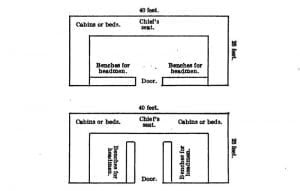Government of the Timucua Indians
The aristocratic nature of Timucua government is apparent from the statements of the French already referred to as well as from the information regarding their social organization recorded by Pareja. From Pareja’s Catechism it appears that chiefs were allowed to exact tribute and labor from their subjects, and that by way of punishment they sometimes had the arms of their laborers broken. From the same source We learn that just before assuming the chieftainship a man had a new fire lighted and maintained for six days in a small house or arbor which was closed up with laurels and “other … Read more

